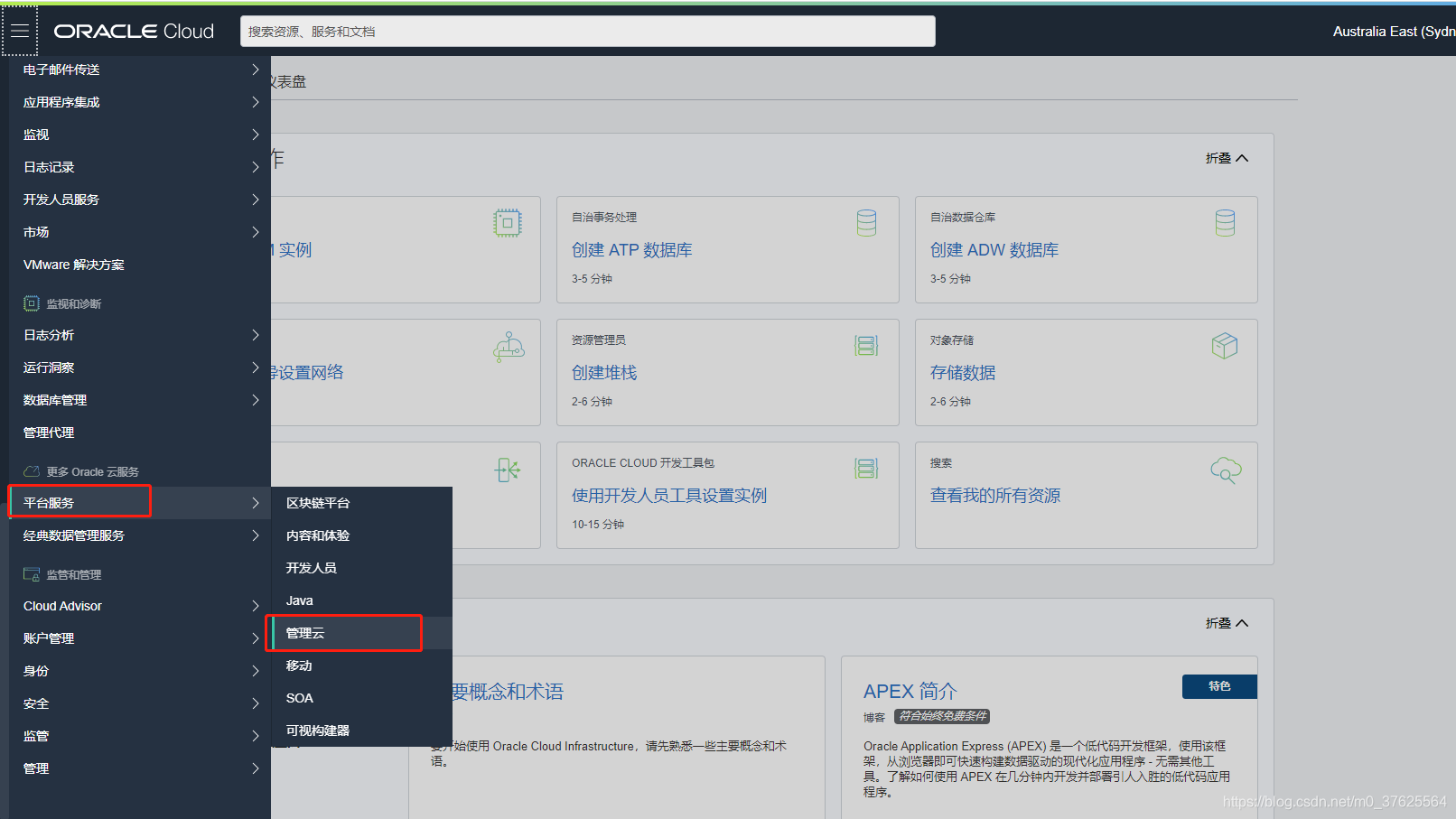OMC日志上传方法
本文共 317 字,大约阅读时间需要 1 分钟。
Oracle相关日志上传至OMC方法:
依次点击导航 --> 平台服务 --> 管理云。
 点击OMC实例名称,进入OMC实例页面
点击OMC实例名称,进入OMC实例页面  点击日志分析
点击日志分析  点击日志管理
点击日志管理  点击上载
点击上载  进入到日志上载界面
进入到日志上载界面 
上传数据库alert日志
点击新建上载
自定义上载名称后,点击选择文件

 上传状态是成功后,点击下一步
上传状态是成功后,点击下一步  关联日志源
关联日志源  关联好日志源后,点击下一步
关联好日志源后,点击下一步  点击上载
点击上载  等待上传,等到成功1,正在上传0,失败0就代表已经完成
等待上传,等到成功1,正在上传0,失败0就代表已经完成 
 至此,数据库日志上传至OMC完成。
至此,数据库日志上传至OMC完成。 另外如果需要上传trace日志、监听日志、集群日志等的话,只需要在关联日志源步骤中选对相关的日志源即可,其他步骤均一致。
附:
OMC分析需上传的日志列表如下: Oracle数据库: MySQL数据库:
MySQL数据库: 
转载地址:http://mplm.baihongyu.com/
你可能感兴趣的文章
MySQL简单查询
查看>>
MySQL管理利器 MySQL Utilities 安装
查看>>
MySQL篇(管理工具)
查看>>
mysql类型转换函数convert与cast的用法
查看>>
mysql系列一
查看>>
MySQL系列之数据类型(Date&Time)
查看>>
MySQL系列之数据类型(Date&Time)
查看>>
Mysql系列之锁机制
查看>>
Mysql系列九:使用zookeeper管理远程Mycat配置文件、Mycat监控、Mycat数据迁移(扩容)...
查看>>
MySql系列:[4200][1140]In aggregated query without GROUP BY, expression #2 of SELECT list contains nona
查看>>
Mysql索引
查看>>
mysql索引
查看>>
mysql索引
查看>>
Mysql索引,索引的优化,如何避免索引失效案例
查看>>
Mysql索引、命令重点介绍
查看>>
mysql索引、索引优化(这一篇包括所有)
查看>>
Mysql索引一篇就够了
查看>>
MySQL索引一篇带你彻底搞懂(一次讲清实现原理加优化实战,面试必问)
查看>>
MySQL索引下沉:提升查询性能的隐藏秘
查看>>
MySql索引为什么使用B+树
查看>>